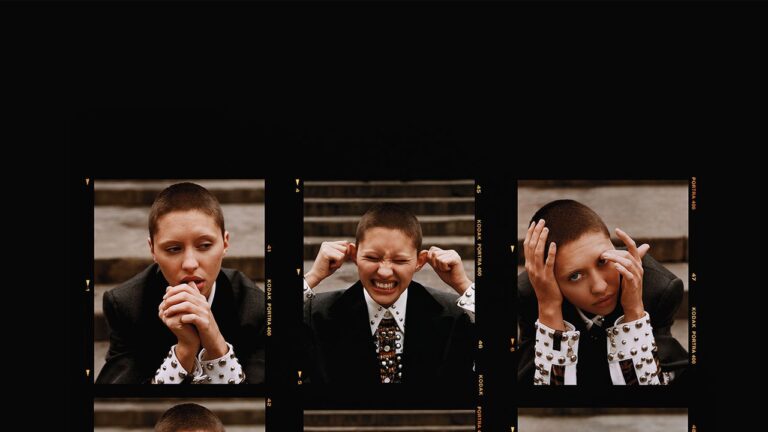Some stress is a natural part of life, but the long-term impact of stress on our physical and mental health can be more far-reaching than we might imagine. According to the BBC, 8 million women and 6.5 million men in the UK suffer from hair loss, with stress recorded as the second most common cause after genetic factors. Emotionally, stress can affect “self-esteem and confidence,” says trichologist and Viviscal ambassador Hannah Gaboardi. “It can lead to self-consciousness, embarrassment and even social withdrawal. Anxiety related to hair loss can create a circular pattern where worrying makes the problem worse.”
If you’re feeling stressed and are noticing noticeable hair loss, “first realize you’re not alone and it’s not ‘abnormal,'” says Annabel Kingsley, chief trichologist and brand president at Philip Kingsley. “Instead of suffering in silence, talk to a friend or family member for emotional support. Then see a board-certified trichologist, doctor or dermatologist who specializes in hair loss to find out what’s causing your hair loss and how to treat it.”
What does normal hair growth look like?
All hair on your head follows a natural life cycle that begins with a growth phase (called anagen). This is followed by a transitional phase (catagen), followed by a telogen phase (telogen). Catagen is the fourth and final phase, and is classified as an active shedding phase. Although it may sound alarming, it is normal to lose 80-100 hairs per day as part of a normal growth cycle.
It’s also important to keep in mind that “normal” varies from person to person: “We all have our own hair type and genetics, which can affect how well our hair grows and how often we lose it,” Kingsley points out.
What are the common types of hair loss?
The two most common types of alopecia are female pattern hair loss and telogen effluvium (excessive daily hair loss). Female pattern hair loss occurs when hair follicles in the scalp become smaller and the hairs they produce become thinner and shorter, taking up less space. The exact cause is still not fully understood. Male pattern hair loss is caused by the scalp hair follicles becoming genetically sensitive to androgens (male hormones). While this may be true for some women, it is more complicated, especially if hair loss occurs at a younger age. Hormonal changes around and during menopause, genes,
Environmental factors may also play a role.
Telogen effluvium is a reactive type of alopecia that is most commonly associated with stress. It occurs when an internal disorder causes more hairs to go into the resting phase than normal. It can also be caused by nutritional deficiencies such as iron deficiency, vitamin B12, vitamin D, or zinc deficiency.
Signs to look out for include:
My hair is thinner than before My scalp is more visible My ponytail is thinner My hair doesn’t grow as long as it used to I’m losing a lot of short hair
How does stress affect hair?
Stress affects hair in a variety of ways. The stress hormone, cortisol, can increase daily hair loss and exacerbate changes in the diameter of existing hair. Stress can further affect the scalp, causing itchy and flaking skin (dandruff). Stress is also known to trigger alopecia areata.

